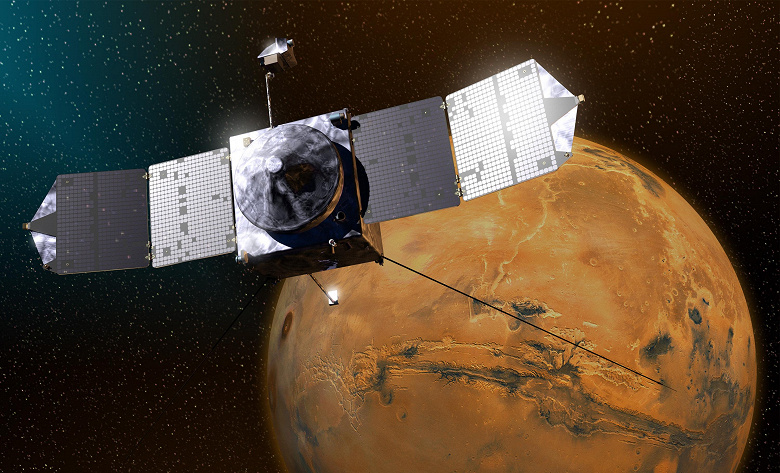Mars probes explore the impact of solar maximum on the Red Planet
This year the Sun reaches the peak of its 11-year cyclic activity, providing scientists with a rare opportunity to study in detail the impact of powerful solar storms and radiation emissions on future manned missions to Mars.
In the coming months, two NASA Mars probes — the MAVEN (Martian Atmosphere and Unstable Evolution) orbiter and the Curiosity rover — will work in tandem to study how intense X-class solar flares and high-energy particle emissions could affect robotic technology and future Martian settlers.
The period of solar maximum, which occurs approximately every 11 years, is characterized by increased flare activity on the Sun. At this time, our star emits powerful streams of radiation and plasma, coronal mass ejections and radiation storms into space.
On Earth, a powerful magnetic field effectively protects the planet and its inhabitants from the destructive effects of these cosmic disasters. However, Mars has lost its global magnetic field over billions of years, making its surface much more vulnerable to radiation from the Sun. Scientists hope to get an answer — how dangerous severe solar storms could be for the inhabitants of the Red Planet, studying data during the current cycle of maximum solar activity.
«For people and objects on the Martian surface, we don't have a clear idea of how solar radiation might affect them during periods of high activity. Before sending astronauts to Mars, it is critical for space agencies to determine the required level of radiation protection. I would like to detect a powerful flare or ejection on Mars this year so that we can study solar radiation in detail, — explains Shannon Curry of the University of Colorado, principal investigator of the MAVEN orbiter.
MAVEN orbits Mars, observing the flow of solar particles, radiation and other processes in the upper layers of the thin Martian atmosphere. However, the intensity of radiation on the surface of the planet itself can differ significantly. Therefore, a comprehensive study requires the use of data from a second apparatus — Mars rover Curiosity with its radiation detector RAD (Radiation Assessment Detector).
“We can detect a million low-energy particles or just a dozen extremely energetic particles. MAVEN is more sensitive to low-energy particles in the atmosphere, while RAD — the only instrument capable of tracking high-energy radiation particles reaching the surface of Mars, the environment in which future astronauts will work, — explains RAD principal investigator Don Hassler of the Southwest Research Institute.
The RAD detector has already provided scientists with valuable data on the effects of radiation on molecules of organic compounds on the surface of Mars — a process that could affect the preservation of potential biosignatures from ancient Martian microorganisms. RAD also made it possible to assess the level of radiation threat to astronauts and determine which Martian shelters — caves, lava tubes or rock outcroppings — will provide the best protection.
When MAVEN detects a powerful solar flare or ejection, the vehicle team immediately alerts colleagues from the Curiosity mission. This allows Mars rovers to quickly activate all radiation sensors and monitor changes in particle fluxes with time resolution down to fractions of a second — all the way from the solar corona to the Martian surface.
A combination of orbital and surface observations during the current solar maximum will help scientists comprehensively assess the risks of solar radiation and develop reliable protections for Mars explorers.
In addition to studying the risks to astronauts, observations of solar maximum on Mars will help understand how warm and wet ancient Mars turned into today's icy desert.
The planet is now closest to the Sun, which heats the atmosphere and provokes powerful dust storms. Some of the residual atmospheric moisture rises to high altitudes, where it can be pushed into space by solar radiation. Scientists suggest that repeating this cycle over millennia could lead to the disappearance of most of the water from Mars.
If a powerful global storm coincides with a strong flare during solar maximum, this will test this hypothesis. Although global storms — rarity, a combination of fortunate factors makes planetary scientists anticipate the current peak of solar activity with special anticipation.

